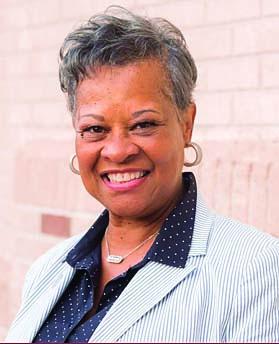March 4, 2021

Beverly Williams
If the events of 2020 have not catapulted us into more than just a mere moment of reckoning with racial justice, then what will it take? As our state still faces the pursuit of racial justice after the fervor of events following the murder of George Floyd, the Covid pandemic, and economic instability, especially in urban Black communities, how can so few people of color not have a seat at the State House’s big tables?
This is the question that looms over my head after hearing the state Senate announcement of legislator appointments earlier this month. This could have been our watershed moment to move beyond the institutional defaults of State House top leadership positions, yet we end up with another two years of a lack of representation of Black, Latinx, and other people of color in higher level positions of the legislaative leadership. What will it take to get more representation in these positions and when do we draw the line?
Two years ago, the Greater Boston Interfaith Organization (GBIO) faced a similar challenge. While we aspired to stand for the whole community, we were not sufficiently broad and representative of the diversity of the entire greater Boston area.
Since then, GBIO has taken active measures to ensure that not only do our leadership team and staff organizers reflect the Commonwealth’s diversity, but also that these positions have driving power accelerated by 56-plus diverse institutions wanting social justice, including racial equity.
One might think this would just happen naturally. In fact, it takes intentional effort, one which is still under way and with more progress to be made. We had to draw the line, take the lead, and make it happen.
Now, our state government needs to do the same and lead in the right direction.
When Massachusetts Gov. Elbridge Gerry (1810-1812) approved a redistricting plan for the State Senate, it included an infamous salamander shaped-district that gave the political advantage to what was then known as the Democrat-Republican Party. This partisan tactic became known as “gerrymandering” and over time was widely used to intentionally weaken the election chances of Black, Latinx and other people of color— a result that continues to this day.
In 2014, the US Census Bureau reported that Black and Latinx citizens made up 20 percent of the Massachusetts population, but today they hold only 5 percent of Senate seats and 8 percent of the House delegation.
The US Constitution requires the redrawing of legislative district lines every ten years, and redistricting in Massachusetts is on the docket this legislative session. I am skeptical that both houses of our Legislature have no strong candidates of color to sit in top leadershippositions this year, but we still have a chance to move in the right direction. We must draw the line.
Drawing new electoral district lines so that they more accurately and fairly reflect our state is how we can infuse the Legislature’s leadership pool with more Black, Latinx, and other people of color.
Beverly Williams of Dorchester is the co-chair of the Greater Boston Interfaith Organization and a member of Bethel A.M.E. Church in Jamaica Plain. She may be reached at 617-438-4595 or mizbevy@gmail.com.



